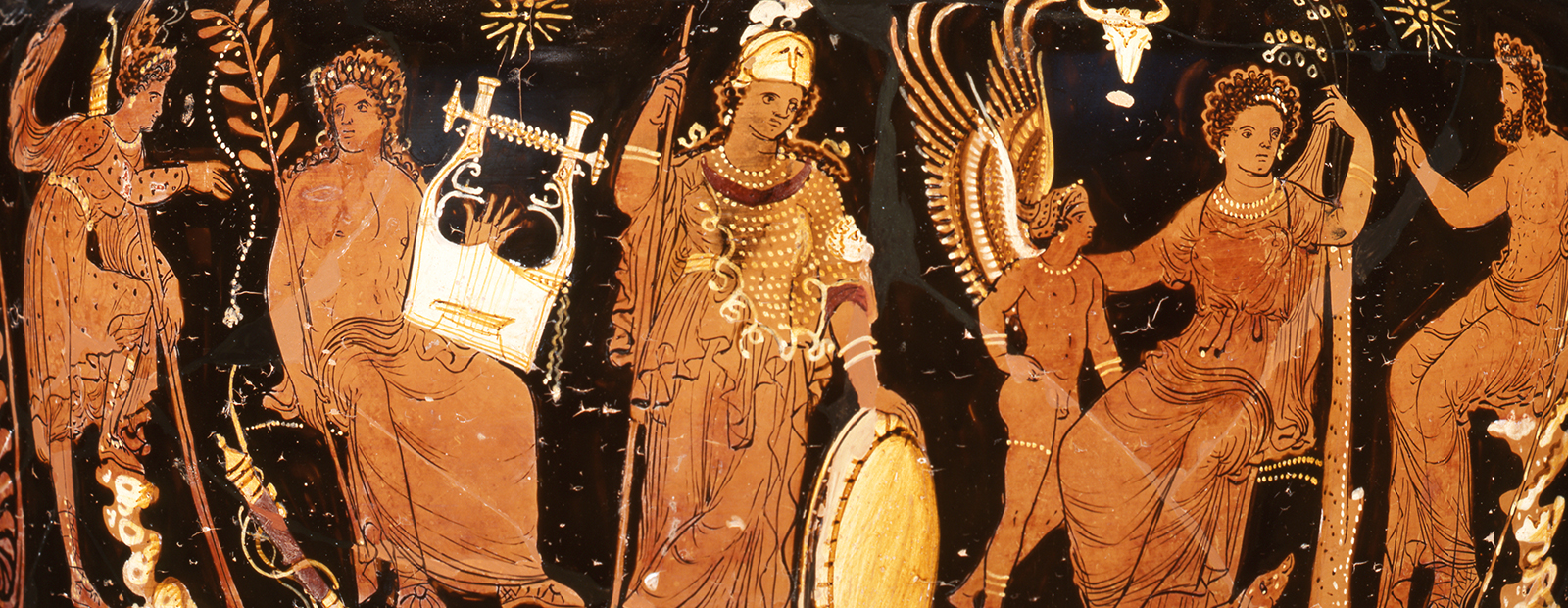We are celebrating Emory’s 175th Commencement on May 11 with an exploration of the Greek deities associated with wisdom, learning, and transformation. For this week’s puzzle, we’ve chosen a detail from this red-figure vase made in Apulia in South Italy in the 320s BC, which depicts two gods associated with learning, wisdom, creativity and the arts: Athena and Apollo.
The vase is of a shape known as a volute-krater. This type of vessel was originally used for diluting wine with water during the symposion, an aristocratic all-male drinking party, but in South Italy during the 4th century BC, volute-kraters were primarily funerary in function. They are typically decorated with multifigured mythological scenes on one side, and with scenes of mourners at tombs on the other.
This vase depicts a scene from the myth of Melanippe, which inspired a play by the 4th-century BC tragedian, Euripides. It’s possible, in fact, that the decoration of this vase was inspired by the performance.
According to myth, Melanippe was raped by the god Poseidon and gave birth to twin boys, which she hid from her father in a cow-shed. The babies were discovered by a herdsman, who brought them to Aeolus, mistakenly thinking they were the monstrous offspring of a cow. The vase depicts the moment when Aeolus’s father Hellen encourages the herdsman to destroy the babies while Melanippe looks on from the right. The events are observed from above by five gods, two of which are shown in this puzzle.
As you complete the puzzle, note the following:
- You can recognize Athena by her distinctive attributes: she wears a plumed helmet pushed back onto the top of her head and a special cloak trimmed with snakes, known as an aegis. She also holds a spear and leans on a round shield. Her militaristic appearance reflects her importance as goddess of strategy, cunning, and good counsel, which made her especially important during times of war.
- Next to her is Apollo, sitting on a rock with drapery wrapped around his waist. Like Athena, he also has specific attributes that aid identification. He holds a kithara (lyre) on his lap, representing his role as god of music and poetry, and carries a large branch of laurel. He also wears a laurel wreath in his hair, referencing his powers of prophecy. The god’s weapon of choice—a bow and arrow—rest at his feet.
Perhaps the artist has included both Apollo and Athena to signal the lack of knowledge displayed in the story by Hellen and the herdsman, as well as to prompt the viewer of the vase to demonstrate their own (superior) understanding of the myth and of what happens next.





